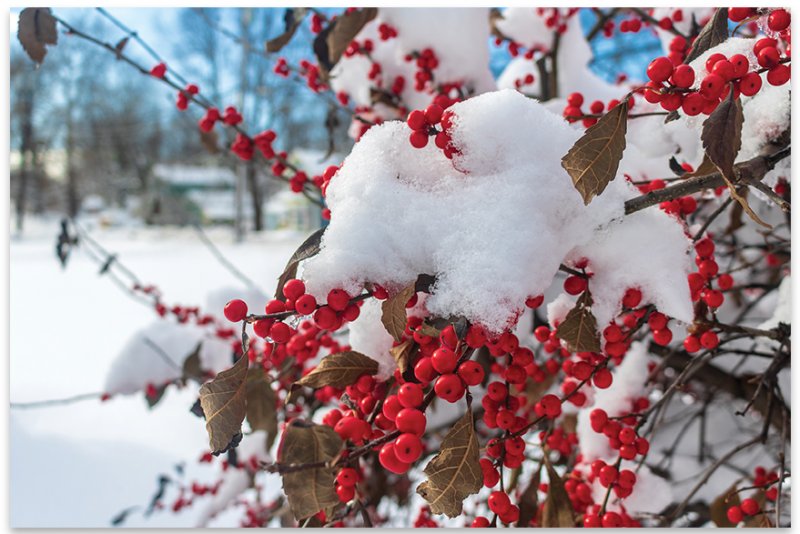Winterberry (Ilex verticillata)
Winterberry (Ilex verticillata): This standout berry bush brings native color to the winter months
- As winterberry is native to our region, you’ll be able to spot the shrub in all its colors; bright red berries are most common, but with proper cross pollination, golden and orange berries may also appear.
- In the spring, understated white flowers bloom on its stems. Come autumn, the bush’s leaves begin to fall off, leaving brightly colored berries on display during the grayer months of winter.
- Also known as winterberry holly, the bush is deciduous, meaning there are both male and female plants in the species. In order to produce the vibrant fruit, the flowers on a female winterberry plant must be fertilized in the spring.
- Don’t let its festive crimson deceive you; winterberry’s fruits are toxic to humans and pets, so they’re best left on the branch for decoration.
- Most commonly, winterberry shrubs grow about ten to fifteen inches tall, but in the wild they can reach up to 12 feet high
